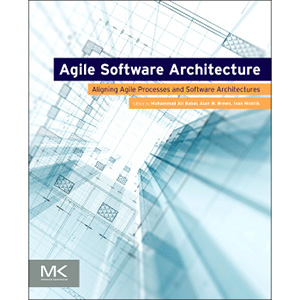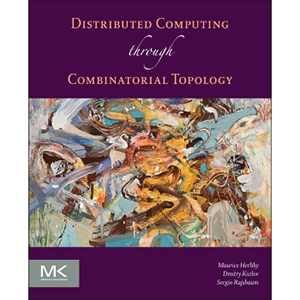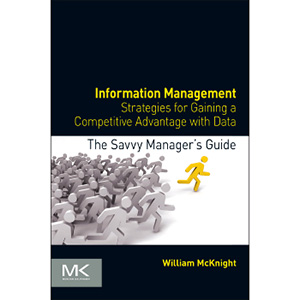| Agile Software Architecture Posted: 10 Feb 2014 05:58 AM PST 
Book Description Agile software development approaches have had significant impact on industrial software development practices. Today, agile software development has penetrated to most IT companies across the globe, with an intention to increase quality, productivity, and profitability. Comprehensive knowledge is needed to understand the architectural challenges involved in adopting and using agile approaches and industrial practices to deal with the development of large, architecturally challenging systems in an agile way. Agile Software Architecture focuses on gaps in the requirements of applying architecture-centric approaches and principles of agile software development and demystifies the agile architecture paradox. Readers will learn how agile and architectural cultures can co-exist and support each other according to the context. Moreover, this book will also provide useful leads for future research in architecture and agile to bridge such gaps by developing appropriate approaches that incorporate architecturally sound practices in agile methods. - Presents a consolidated view of the state-of-art and state-of-practice as well as the newest research findings
- Identifies gaps in the requirements of applying architecture-centric approaches and principles of agile software development and demystifies the agile architecture paradox
- Explains whether or not and how agile and architectural cultures can co-exist and support each other depending upon the context
- Provides useful leads for future research in both architecture and agile to bridge such gaps by developing appropriate approaches, which incorporate architecturally sound practices in agile methods
Table of Contents
Chapter 1. Introduction to ASA Part I: Fundamentals of Agile Architecting
Chapter 2. The DCI Paradigm: Beyond Class-Oriented Architecture to Object Orientation
Chapter 3. Refactoring software architecture
Chapter 4. Architecture Decisions: Who, How and When? Part II: Managing Software Architecture in Agile Projects
Chapter 5. Combining agile development and variability handling to achieve adaptable software architectures
Chapter 6. Agile software architecture knowledge management
Chapter 7. Continuous software architecture analysis
Chapter 8. Bridging user stories and software architectures: a guidance support for agile architecting Part III: Agile Architecting in Specific Domains
Chapter 9. Architecture-centric testing for security: An agile perspective
Chapter 10. Multi-tenancy multi-target architectures: Extending multi-tenancy architectures for agile deployment and development Part IV: Industrial Viewpoints on Agile Architecting
Chapter 11. Bursting the Agile Bubble Anti-Pattern
Chapter 12. Building a Platform for Innovation: Architecture and Agile as Key Enablers
Chapter 13. Opportunities, threats and limitations of emergent architecture
Chapter 14. Aviva GI: Architecture as a Key Driver for Agile Success Book Details - Paperback: 432 pages
- Publisher: Morgan Kaufmann (December 2013)
- Language: English
- ISBN-10: 0124077722
- ISBN-13: 978-0124077720
Note: There is a file embedded within this post, please visit this post to download the file. Related Books The post Agile Software Architecture appeared first on Wow! eBook. |
| Distributed Computing Through Combinatorial Topology Posted: 10 Feb 2014 05:53 AM PST 
Book Description Distributed Computing Through Combinatorial Topology describes techniques for analyzing distributed algorithms based on award winning combinatorial topology research. The authors present a solid theoretical foundation relevant to many real systems reliant on parallelism with unpredictable delays, such as multicore microprocessors, wireless networks, distributed systems, and Internet protocols. Today, a new student or researcher must assemble a collection of scattered conference publications, which are typically terse and commonly use different notations and terminologies. This book provides a self-contained explanation of the mathematics to readers with computer science backgrounds, as well as explaining computer science concepts to readers with backgrounds in applied mathematics. The first section presents mathematical notions and models, including message passing and shared-memory systems, failures, and timing models. The next section presents core concepts in two chapters each: first, proving a simple result that lends itself to examples and pictures that will build up readers’ intuition; then generalizing the concept to prove a more sophisticated result. The overall result weaves together and develops the basic concepts of the field, presenting them in a gradual and intuitively appealing way. The book’s final section discusses advanced topics typically found in a graduate-level course for those who wish to explore further. - Gathers knowledge otherwise spread across research and conference papers using consistent notations and a standard approach to facilitate understanding
- Presents unique insights applicable to multiple computing fields, including multicore microprocessors, wireless networks, distributed systems, and Internet protocols
- Synthesizes and distills material into a simple, unified presentation with examples, illustrations, and exercises
Table of Contents
Part I: Fundamentals
Chapter 1. Introduction
Chapter 2. Two-Process Systems
Chapter 3. Elements of Combinatorial Topology Part II: Colorless Tasks
Chapter 4. Colorless Wait-free Computation
Chapter 5. Solvability of Colorless Tasks
Chapter 6. Byzantine Colorless Computation
Chapter 7. Simulations and Reductions Part III: General Tasks
Chapter 8. Read-Write Protocols for General Tasks
Chapter 9. Manifold Protocols
Chapter 10. Connectivity
Chapter 11. Wait-Free Computability for General Tasks Part IV: Advanced Topics
Chapter 12. Renaiming and Oriented Manifolds
Chapter 13. Task Solvability in Different Communication Models
Chapter 14. Colored Simulations and Reductions
Chapter 15. Classifying Loop Agreement Tasks
Chapter 16. Immediate Snapshot Subdivisions Book Details - Paperback: 336 pages
- Publisher: Morgan Kaufmann (December 2013)
- Language: English
- ISBN-10: 0124045782
- ISBN-13: 978-0124045781
Note: There is a file embedded within this post, please visit this post to download the file. Related Books The post Distributed Computing Through Combinatorial Topology appeared first on Wow! eBook. |
| Platform Ecosystems Posted: 10 Feb 2014 05:49 AM PST 
Book Description Platform Ecosystems is a hands-on guide that offers a complete roadmap for designing and orchestrating vibrant software platform ecosystems. Unlike software products that are managed, the evolution of ecosystems and their myriad participants must be orchestrated through a thoughtful alignment of architecture and governance. Whether you are an IT professional or a general manager, you will benefit from this book because platform strategy here lies at the intersection of software architecture and business strategy. It offers actionable tools to develop your own platform strategy, backed by original research, tangible metrics, rich data, and cases. You will learn how architectural choices create organically-evolvable, vibrant ecosystems. You will also learn to apply state-of-the-art research in software engineering, strategy, and evolutionary biology to leverage ecosystem dynamics unique to platforms. Read this book to learn how to: - Evolve software products and services into vibrant platform ecosystems
- Orchestrate platform architecture and governance to sustain competitive advantage
- Govern platform evolution using a powerful 3-dimensional framework
If you’re ready to transform platform strategy from newspaper gossip and business school theory to real-world competitive advantage, start right here! - Understand how architecture and strategy are inseparably intertwined in platform ecosystems
- Architect future-proof platforms and apps and amplify these choices through governance
- Evolve platforms, apps, and entire ecosystems into vibrant successes and spot platform opportunities in almost any-not just IT-industry
Table of Contents
Part I: The Rise of Platforms
Chapter 1. The Rise of Platforms
Chapter 2. Core Concepts and Principles
Chapter 3. Why Platform Businesses are Unlike Product or Service Businesses
Chapter 4. The Value Proposition of Platforms Part II: Architecture and Governance
Chapter 5. Platform Architecture
Chapter 6. Platform Governance Part III: Dynamics and Metrics of Ecosystem Evolution
Chapter 7. Metrics of Evolution
Chapter 8. Real Options Thinking
Chapter 9. Modular Operators Part IV: Orchestrating Evolution
Chapter 10. Evolving a Platform
Chapter 11. Evolving an App Part V: The Road Ahead
Chapter 12. Why Every Product is a Platform Waiting to Happen Book Details - Paperback: 300 pages
- Publisher: Morgan Kaufmann (December 2013)
- Language: English
- ISBN-10: 0124080669
- ISBN-13: 978-0124080669
Note: There is a file embedded within this post, please visit this post to download the file. Related Books The post Platform Ecosystems appeared first on Wow! eBook. |
| Freemium Economics Posted: 10 Feb 2014 05:45 AM PST 
Book Description Freemium Economics presents a practical, instructive approach to successfully implementing the freemium model into your software products by building analytics into product design from the earliest stages of development. Your freemium product generates vast volumes of data, but using that data to maximize conversion, boost retention, and deliver revenue can be challenging if you don’t fully understand the impact that small changes can have on revenue. In this book, author Eric Seufert provides clear guidelines for using data and analytics through all stages of development to optimize your implementation of the freemium model. Freemium Economics de-mystifies the freemium model through an exploration of its core, data-oriented tenets, so that you can apply it methodically rather than hoping that conversion and revenue will naturally follow product launch. By reading Freemium Economics, you will: - Learn how to apply data science and big data principles in freemium product design and development to maximize conversion, boost retention, and deliver revenue
- Gain a broad introduction to the conceptual economic pillars of freemium and a complete understanding of the unique approaches needed to acquire users and convert them from free to paying customers
- Get practical tips and analytical guidance to successfully implement the freemium model
- Understand the metrics and infrastructure required to measure the success of a freemium product and improve it post-launch
- Includes a detailed explanation of the lifetime customer value (LCV) calculation and step-by-step instructions for implementing key performance indicators in a simple, universally-accessible tool like Excel
Table of Contents
Chapter 1. What is the Freemium Model?
Chapter 2. Analytics as the Heart of Freemium
Chapter 3. Quantitative methods for product management
Chapter 4. Freemium Metrics
Chapter 5. Lifetime Customer Value
Chapter 6 Monetization and Downstream Marketing
Chapter 7. Virality
Chapter 8. Optimized User Acquisition Book Details - Paperback: 254 pages
- Publisher: Morgan Kaufmann (January 2014)
- Language: English
- ISBN-10: 0124166903
- ISBN-13: 978-0124166905
Note: There is a file embedded within this post, please visit this post to download the file. Related Books The post Freemium Economics appeared first on Wow! eBook. |
| Information Management Posted: 10 Feb 2014 05:41 AM PST 
Book Description Information Management: Gaining a Competitive Advantage with Data is about making smart decisions to make the most of company information. Expert author William McKnight develops the value proposition for information in the enterprise and succinctly outlines the numerous forms of data storage. Information Management will enlighten you, challenge your preconceived notions, and help activate information in the enterprise. Get the big picture on managing data so that your team can make smart decisions by understanding how everything from workload allocation to data stores fits together. The practical, hands-on guidance in this book includes: - Part 1: The importance of information management and analytics to business, and how data warehouses are used
- Part 2: The technologies and data that advance an organization, and extend data warehouses and related functionality
- Part 3: Big Data and NoSQL, and how technologies like Hadoop enable management of new forms of data
- Part 4: Pulls it all together, while addressing topics of agile development, modern business intelligence, and organizational change management
Read the book cover-to-cover, or keep it within reach for a quick and useful resource. Either way, this book will enable you to master all of the possibilities for data or the broadest view across the enterprise.
- Balances business and technology, with non-product-specific technical detail
- Shows how to leverage data to deliver ROI for a business
- Engaging and approachable, with practical advice on the pros and cons of each domain, so that you learn how information fits together into a complete architecture
- Provides a path for the data warehouse professional into the new normal of heterogeneity, including NoSQL solutions
Table of Contents
Part 1: No Matter What Business You're In, You're in the Business of Information
Chapter 1. Relational Theory in Practice: Data Warehouses and Data Marts
Chapter 2. Business Intelligence is Everywhere and You're in the Business of Analytics
Chapter 3. Data Quality: Passing the Standard Part 2: Beyond the Data Warehouse
Chapter 4. Data Warehouse Appliances and Columnar Approaches
Chapter 5. Master Data Management
Chapter 6. Data Stream Processing
Chapter 7. Data Virtualization
Chapter 8. Syndicated Data Part 3: Big Data
Chapter 9. Hadoop: Analytics at Scale
Chapter 10. Key-Value Stores, Document Stores, and Column Stores
Chapter 11. Graph Databases
Chapter 12. Cloud Computing Part 4: Putting it all Together
Chapter 13. An Elegant Architecture Where Information Flows
Chapter 14. Collaboration, Mobile and Self-Service
Chapter 15. Information Security
Chapter 16. Agile Approaches, Specifically SCRUM
Chapter 17. Organizational Change Management Book Details - Paperback: 214 pages
- Publisher: Morgan Kaufmann (December 2013)
- Language: English
- ISBN-10: 0124080561
- ISBN-13: 978-0124080560
Note: There is a file embedded within this post, please visit this post to download the file. Related Books The post Information Management appeared first on Wow! eBook. |






Tidak ada komentar:
Posting Komentar